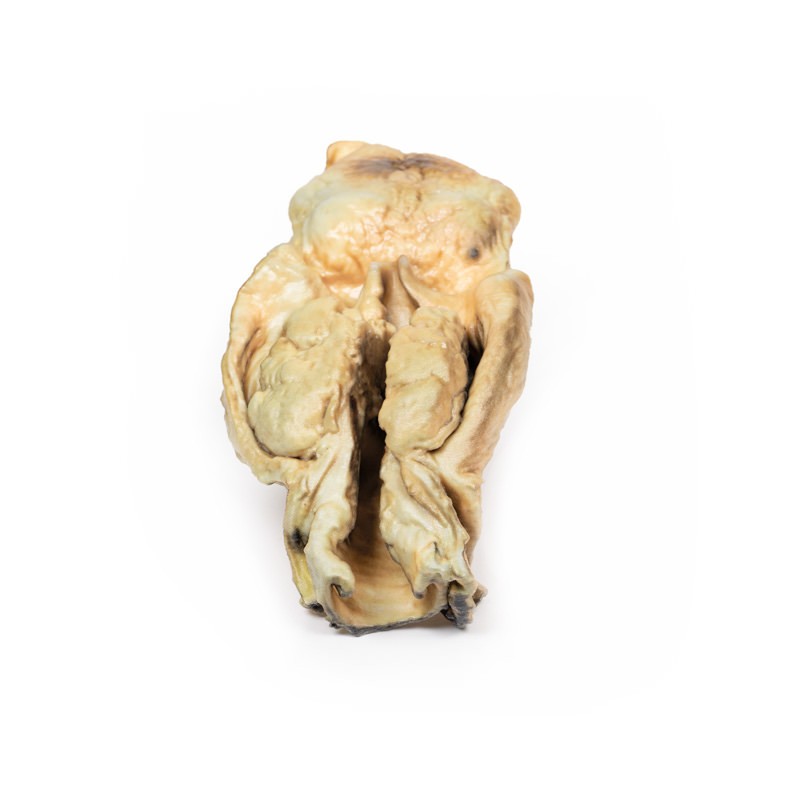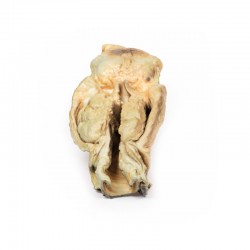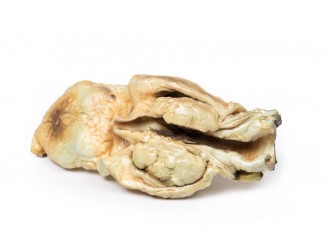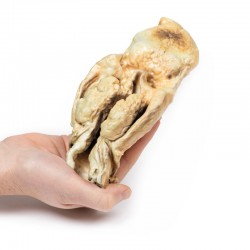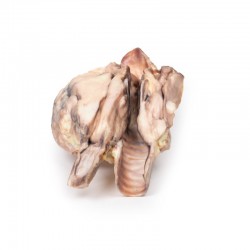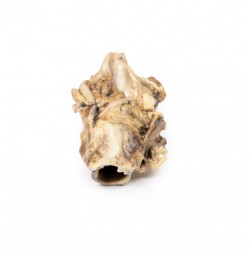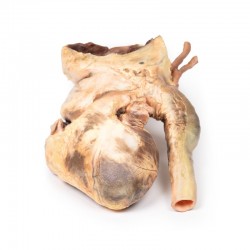Home / 3D anatomy models / 3D anatomical models of pathologies and diseases / Carcinoma of Larynx
Carcinoma of Larynx
Carcinoma of Larynx
 Download a PDF file Add to quotation - wish list
Download a PDF file Add to quotation - wish listProduct description: Carcinoma of Larynx

Clinical History
A 74-year old male presented with a 2-months history of dysphagia, dysphonia and weight loss. He had a history of heavy alcohol consumption and smoked 40 cigarettes per day for 40 years. Investigation discovered a laryngeal tumour. He received radiotherapy but his tumour reoccurred. He died 9 months after his initial presentation.
Pathology
The specimen consists of tongue, pharynx, larynx, oesophagus and trachea and has been mounted in the coronal plane. The oesophagus and trachea have been opened from the posterior aspect. There is a 5 x 4 x 2 cm fungating carcinoma evident extending into both pyriform fossae. The surface of the tumour is irregular with shaggy areas of necrosis. The tumour has arisen from the larynx and involves both vocal cords, the left aryepiglottic fold and both pyriform fossae.
Further Information
Over 95% of laryngeal cancers are squamous cell carcinomas. The tumour usually develops on the vocal cords but may occur above or below the cords, on the epiglottis, aryepiglottic folds or in the pyriform fossae. The cancer usually begins as squamous cell carcinoma in situ, progressing to ulcerated and fungating invasive carcinoma with continued exposure to carcinogens. The greatest risk factors for developing cancer of the larynx are tobacco smoke and alcohol consumption. Human Papilloma Virus (HPV) infection, asbestos exposure and irradiation have also been shown to be associated with increased incidence of head-and-neck squamous cell carcinoma (HNSCC). Males are affected more than females. It most frequently presents in the 6th decade of life. Laryngeal cancer may spread by invading into surrounding structures, via lymphatics usually to local cervical nodes, or haematogenous metastasis most commonly to the lungs. Common symptoms of HNSCC on presentation include dysphonia, dysphagia, odynophagia, globus and cough. Less commonly haemoptysis, stridor, dyspnoea and halitosis may be described.
Treatment varies on the stage of the disease. Smoking and alcohol cessation are important for all disease stages. In early disease laryngeal preservation treatments may include laser therapy, microsurgery and radiotherapy. Later stage disease treatments may involve a combination of laryngectomy, radiotherapy and chemotherapy.
HPV-related HNSCC have better outcomes than those non-HPV positive tumours. HPV-vaccination programmes have been introduced in several countries, including Australia and the UK, for both boys and girls, in order to reduce their risk for HNSCC.







